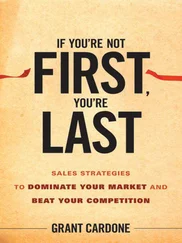Generally speaking, CSR promoters have used four arguments to defend their cause: moral obligation (asserting their duty to be corporate citizens), sustainability, reputation (image) and “legitimacy to operate” (Porter and Kramer 2010).
This book focuses on social and environmental strategies based on CSV and is divided into three parts. The first part presents the theoretical development, which analyzes the challenges of CSR strategies based on CSV. The second part includes two case studies that analyze the different forms of environmental innovation strategies based successively on the concept of “ethical values” and CSV, developed by the Decathlon Group. The third part analyzes the different social innovation strategies capable of inducing CSV.
PART I Analysis of Factors Incentivizing Companies to Develop CSV-based Strategies for Societal Innovations
This theoretical section deals successively with the analysis of the foundations of societal strategies based on the creation of shared value (CSV), the role that these strategies play in correcting and/or anticipating potential damage to the company, social and environmental innovations, as well as in analyzing ecosystems capable of facilitating the implementation of this type of strategy, the key steps in calculating the value of the impact investment and, finally, the development of innovative business models based on CSV.
The radical liberal conception of business has evolved towards a contractual conception of CSR. It is no longer a question of whether the value created by a company is private income for shareholders alone, but that it is also a partnership value for its other stakeholders. The CSV concept proposed by Porter and Kramer (2006) assumes that the firm must develop a societal strategy, while at the same time, extending its governance to its stakeholders. CSR strategies can enable a company to reduce the negative societal externalities brought about by its activities, and produce positive externalities. Moreover, they can limit the pressures exerted by stakeholders, by taking into account their specific expectations and the power and resources they hold which are necessary for the company. Regulatory or hard power authorities intervene at the regulatory level. Soft power players are a powerful source of influence and persuasion, which encourages the company to behave in a way that is acceptable to society. Societal practices will then reinforce the classic attributes of products with tangible and intangible product differentiation attributes. This differentiation is only effective if the company uses labels as a management tool to allow customers to make inferences when making purchases. But these eco-responsible purchasing acts will only increase if customers have a better understanding of the positive issues of CSR for society. The challenge in implementing CSV-based societal strategies is developing an organization capable of innovation in the company’s industry. Managers must give priority to societal, technological and organizational innovations that generate CSV for the company, by supporting its overall business strategy; they must also promote the establishment of fruitful collaborations with various actors in their business ecosystems (BE). To accelerate change, the traditional BE must be transformed into a regional societal business ecosystem (RSBE), without constraints and/or additional costs. If businesses want to be more resilient, they will adopt different approaches based on three levers: vision, societal project and partnership. Their competitive advantage will be linked to finding and selecting effective innovation strategies that other stakeholders can buy into. This implies that impact investment will allocate capital to projects that will generate social and environmental benefits, as well as benefits for companies. Some prospective methodology has been developed to estimate the potential benefits of such projects, by calculating a new indicator called the Impact Multiple of Money (IMM), based on the results of relevant foothold studies. Depending on their history and sector, companies must adopt a business model that refers to their value chain and its impact on the competitive environment, industrial investment choices and product life cycles. They can choose between three types of business models: repair (if they do not practice CSR), innovation (if they develop a new business) or the creation of a business from scratch. In all of the business models, they will have to achieve specific competitive and societal objectives.
1
Foundations of the Societal Strategy Based on Creating Shared Value (CSV)
Existing literature on CSR focuses on two opposing visions that have different consequences.
1.1. The issues at stake in the liberal and contractual conceptions of CSR
The first vision is a radical liberal conception, which is taken up by Levitt (1958) and Friedman (1970) in particular, who consider that the sole social responsibility of a company is to make profit. In this approach, the State is the only political and public actor, while companies, as private, non-political actors, are exempt from exposing their decisions to public scrutiny, or justifying their behavior, if they comply with the regulations in force and the morality of the practice (Friedman 1962, 1970). Companies are rarely seen as agents of societal change, even though, as Kramer and Pfitzer (2017) point out, the correlation between social progress and business success is becoming increasingly evident. The second vision is the instrumental position of CSR, which can be seen in the works of Mitchell et al . (1997), Jensen (2002), and Sundaram and Inkpen (2004). CSR CSV can be called “strategic” because it affects the firm’s position in relation to its competitors and goes far beyond action, to correct or anticipate potential damage to the firm (boycott, etc.). When this strategy is associated with competitive societal innovation, the company can improve its financial and societal performance. Profit maximization is one of the ultimate objectives of a company, but does not contradict the consideration of the interests of its various stakeholders. With this contractual conception of CSR, the company becomes a major economic and social player. The two visions of CSR differ in terms of the nature of the value created. The radical liberal vision is limited to the creation of shareholder value, but has evolved with the emergence of partnership value creation (Charreaux and Desbrières 1998). According to these authors, in the traditional financial approach, the value created is equal to the income received by shareholders, whereas partnership value is based on an overall measure of income created by the firm in relation to its stakeholders, not just the shareholders. Partnership value creation does not focus entirely on the process of value creation and sharing, but is merely an extension of the creation of shareholder value to other stakeholders, such as employees (Gautier et al . 2013). In recent years, companies have become increasingly interested in creating shared value (CSV), thanks to CSR practices as part of the contractual approach, which advocate a partnership-based mode of governance. In this case, taking into account the expectations of the various internal and external stakeholders with regard to acceptable behavior in the company’s activities is at the heart of the CSR concept. Jensen (2002) acknowledges that the partnership perspective of stakeholder-based governance can contribute to maximizing the firm’s market value. This valuation led him to propose the concept of “enlightened value maximization”. Subsequently, the innovative concept of “creating shared value” was mainly proposed by Porter and Kramer (2006, 2011). In their 2006 article, this concept was based on the interrelationships that existed between companies and society, whereas in their 2011 article, they considered that companies were not able to seize the opportunities that CSR represented, in terms of overall performance (financial and societal). For Pfitzer et al . (2014), the shared value is “the implication of integrating a social mission into the culture of the company and the allocation of resources towards the development of innovations that can help solve social problems”. For Kramer and Pfitzer (2017), CSV is “the creation of profit (business success) for the company while generating benefits for society”. These various definitions all converge towards the same principle: the activities of the company can affect society, and society can in turn affect the company.
Читать дальше












